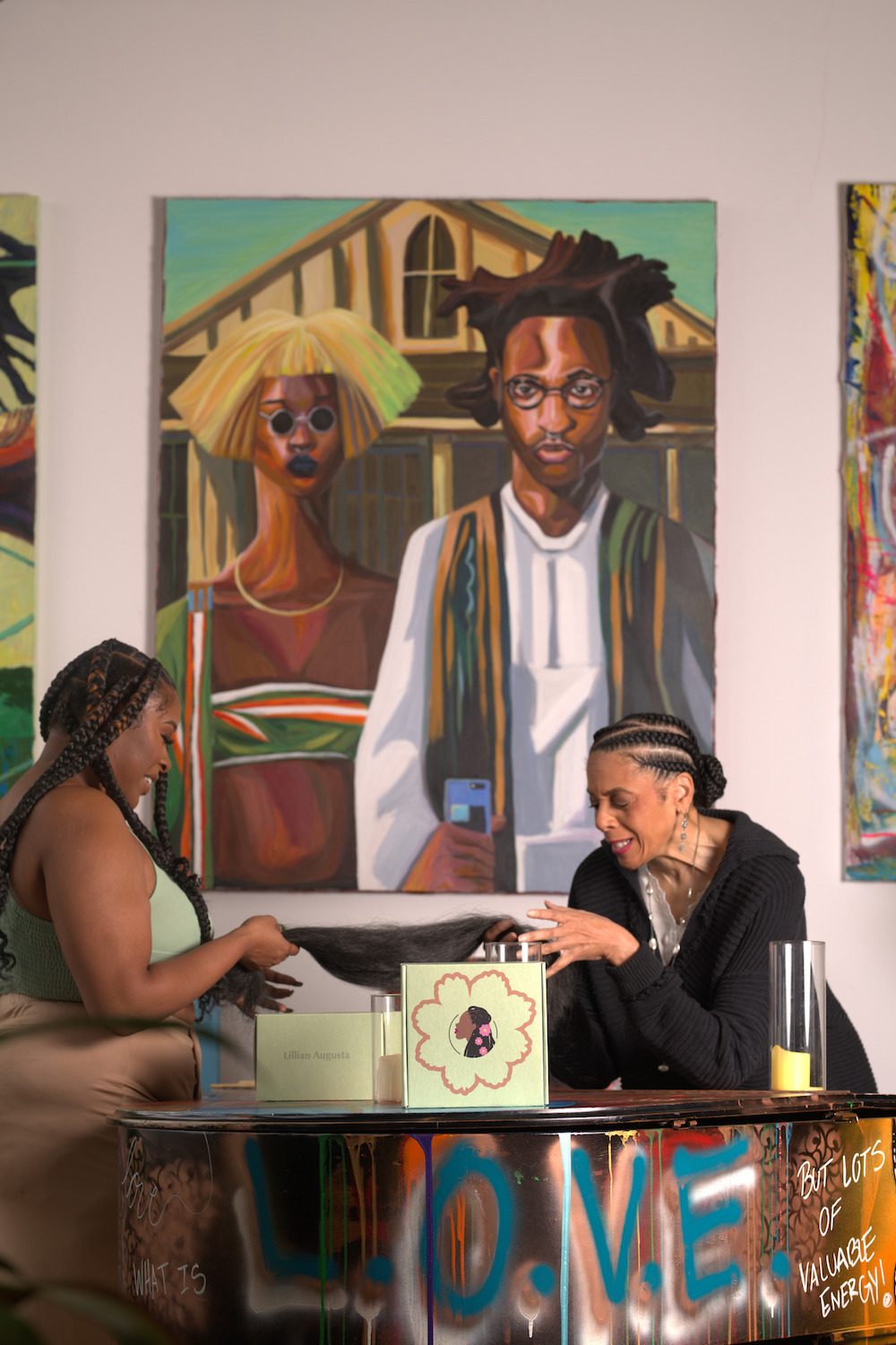A Conversation with Jannice Newson,
CEO of Lillian Augusta Hair
 Questions by Emily Taylor Penix of Zell Lurie Institute
Questions by Emily Taylor Penix of Zell Lurie Institute
E: Why do you see a need for plant-based hair? What’s so wrong with traditional synthetic braiding hair?
J: Synthetic braiding hair is made of plastic, very low-grade carcinogenic plastic. Lots of folks are not aware of why it causes such an uncomfortable experience when wearing it, which is not their own fault as most synthetic braiding hair lacks an ingredient list. I saw a need for better braiding hair in general because I get allergic reactions to this plastic hair myself, and with some interviews and surveys, I found out so many others are dealing with this pain too. The health concerns are only half the problem with synthetic braiding hair. Since it’s plastic, it’s also a source of pollution. With a plant-based option, we can deal with the root of the problem on both sides at once.
 E: Tell me about your first experiences making plant-based hair. What did this process look like? Where were you then and what were you making it out of?
E: Tell me about your first experiences making plant-based hair. What did this process look like? Where were you then and what were you making it out of?
J: It was messy. The first thing we did was cut down plants on Michigan’s campus and take them to the fiber studio and mechanical engineering lab. We didn’t get far with the labs, as the school closed due to COVID-19. So, we started making hair in the basement, which was not practical, but we continued to learn about better strategies for materials and processing. We were using Phragmites for the most part, which is an invasive plant in the Midwest.
 E: What is it made out of now and why?
E: What is it made out of now and why?
J: Currently, we have corn-derived braiding hair. It was important to us to maintain the qualities people enjoy when wearing braids while eliminating the ones they do not.
E: What were some of the most intricate processes that you dove into while developing Lillian Augusta Hair?
J: Community engagement. I use braided hair, but I use it in a way that suits my needs and desires. From interviews and surveys, we learned the multitude of ways people use the hair and deal with the issues that it presents. It has informed the research and development process to strive towards what people want and need.
E: Who benefits from your product?
J: Braiding hair is primarily worn by Black women. Black consumers spend nine times more on hair and beauty than any other racial demographic. Yet, 50% of hair and beauty products marketed toward Black women have endocrine disruptors, compared to 7% of those marketed toward white women. We are aiming to provide more agency in the hair and beauty marketplace.
E: How has your education and background equipped you to produce Lillian Augusta Hair?
J: The pros of being a science nerd. I have a BS in Environmental Science and a MS in Conservation Ecology. I’ve been studying ecosystems all throughout my academic career and was certainly moved towards a plant-based solution because of it.
E: How has ZLI impacted the decisions that you are making for your business today?
J: Directly after the decision to make plant-based braiding hair, it was immediately clear that I needed help. The following week I was in the ZLI offices, and I was welcomed with open arms and advice. ZLI has been pivotal in this journey from the very start.
E: Is the product for sale? Or can we see it?
J: We are raising money to launch! Check out our Wefunder campaign for an opportunity to invest.
See our hair in action at the annual Fleurotica fashion show.
E: How can people get involved or follow the progress that you are making?
J: Check out our blogs- https://www.hairwithoutharm.com/community
Invest in our crowdfunding campaign- https://wefunder.com/lillian.augusta
Subscribe for updates- https://www.hairwithoutharm.com
Or follow us on social-
https://www.instagram.com/hairwithoutharm
https://twitter.com/hairwithoutharm
https://tiktok.com/@hairwithoutharm
E: What will investments into Lillian Augusta be used for?
J: An investment in Lillian Augusta today goes toward inventory, equipment, and marketing expenses to ensure a successful launch.
